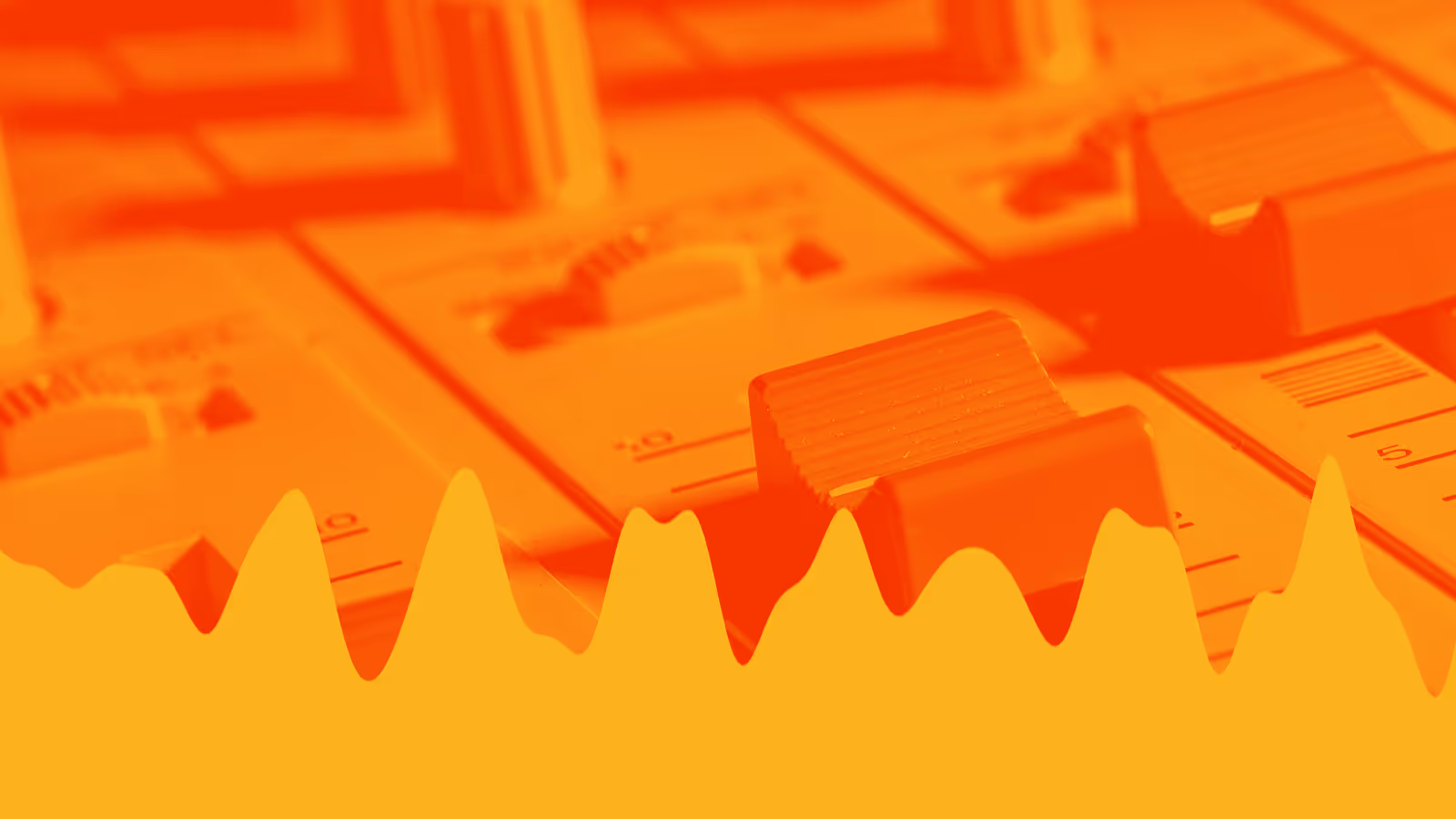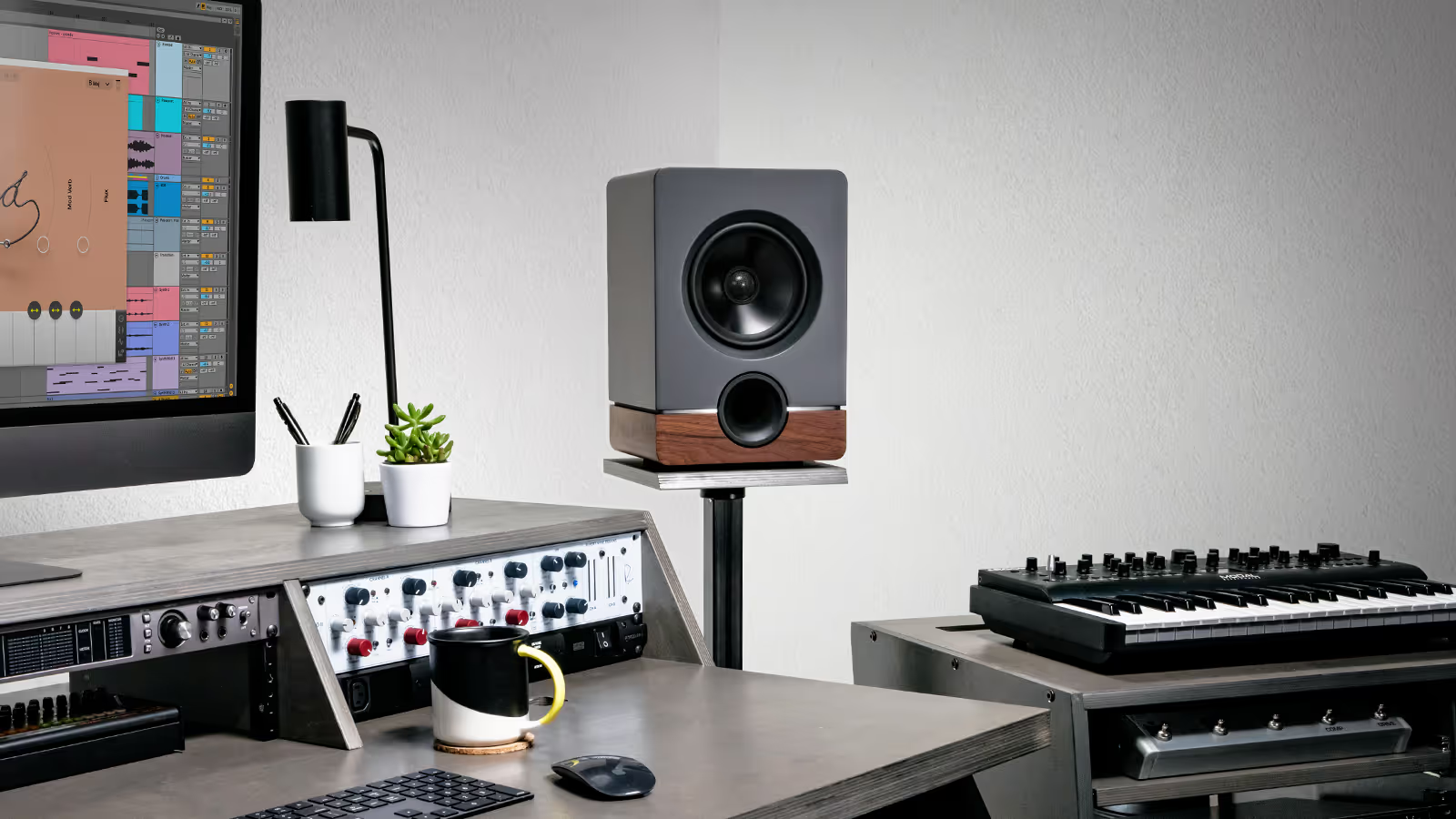
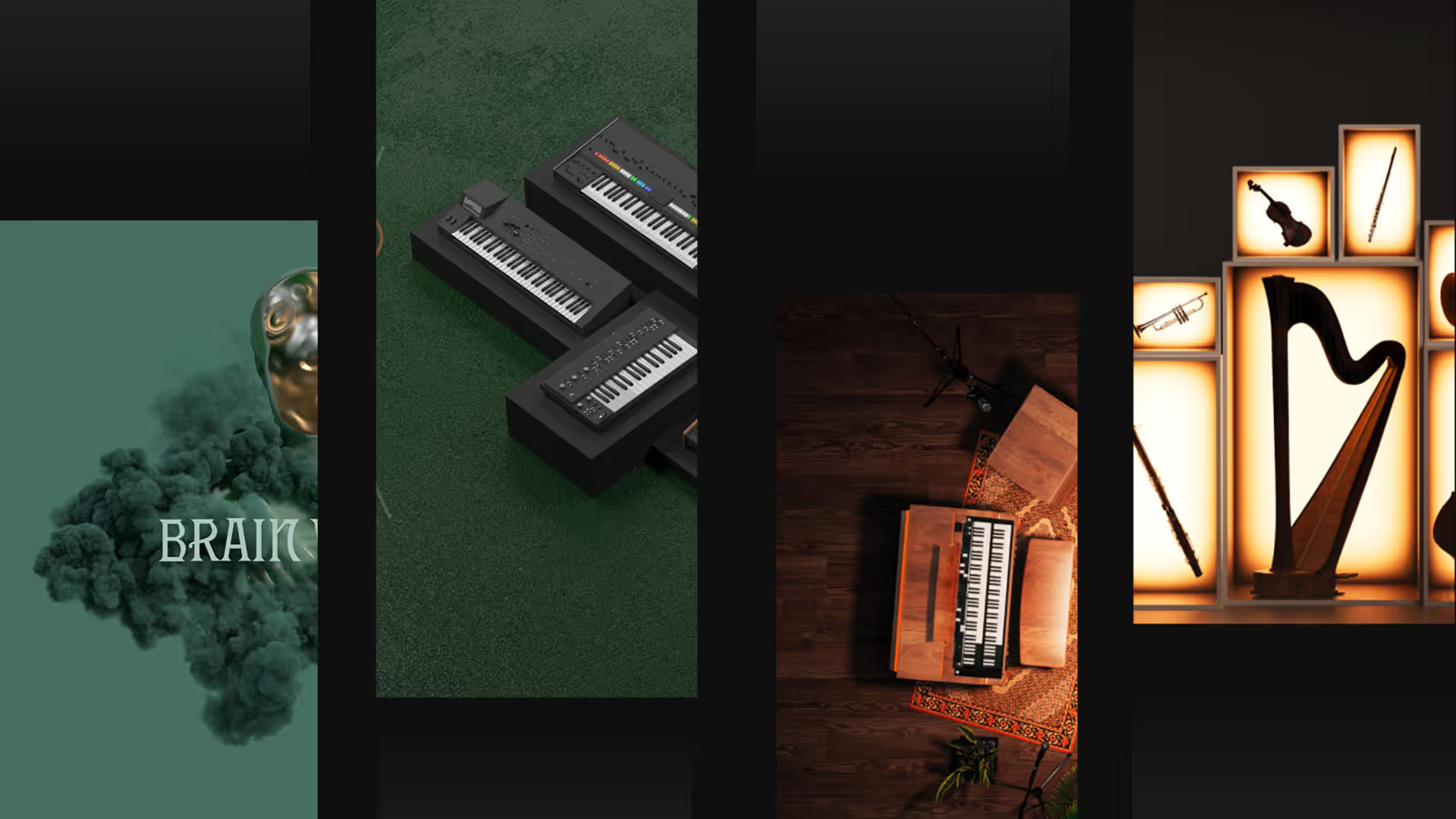
6 Best Cubase Plugins to Obsess Over in 2025
Stop endlessly searching for Cubase plugins. We found 6 essential tools that will actually improve your workflow and expand your sonic palette for 2025.

Point Co-Producer at your vibe and get usable sounds in seconds, without ever leaving Cubase.
Try Co-Producer for freeChoosing the right plugins for Cubase can feel like a full-time job, but a dialed-in setup is the key to a fluid workflow and staying in the zone.
As the DAW that pioneered the VST standard, Cubase plays nice with nearly every third-party tool out there, which is both a blessing and a curse.
That massive compatibility can lead to option paralysis when you're just trying to find cubase plugins that spark ideas, not slow you down with endless tweaking.
So, we cut through the noise. Here are six indispensable tools from makers like Arturia, u-he, EastWest Sounds, and (of course) Output that will actually earn their keep in your sessions.
1) Output Plugins
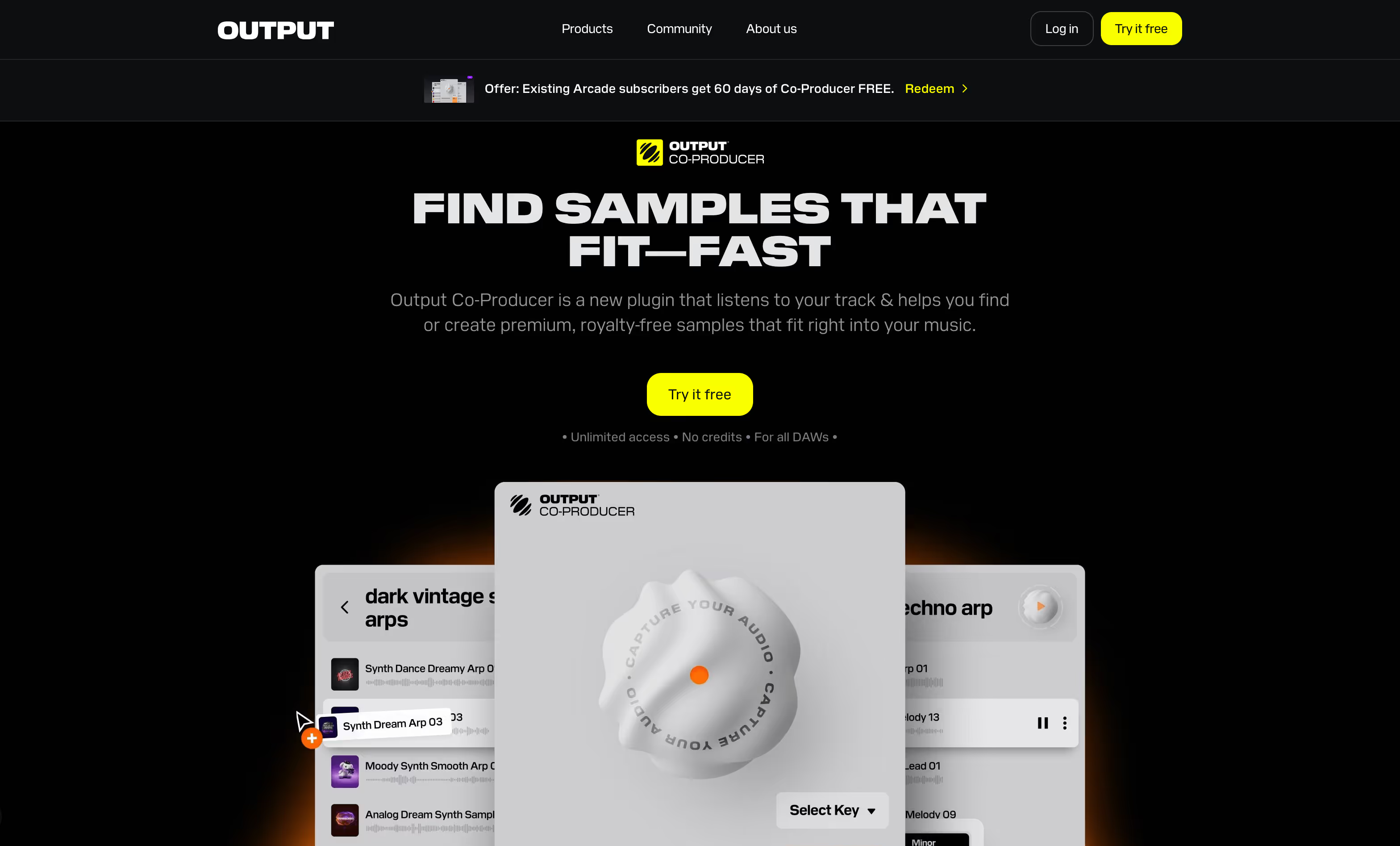
As the team behind Output, we build instruments and effects that cut straight to the good stuff. Since Cubase practically invented the VST party, our whole lineup—from the Arcade sample engine to our suite of FX—integrates seamlessly so you can spend less time troubleshooting and more time producing.
Output Plugin Features
All of our instruments and effects run natively in Cubase as VST plugins, so they feel right at home in your workflow. Take our AI-powered tool, Co-Producer, for instance. It lives inside your DAW and listens to your track, then suggests perfectly matched sounds from our library based on what it hears or on a text prompt you type in. No more digging through folders when you're trying to catch a vibe.
- Analyzes your project audio to suggest key- and tempo-matched sounds.
- Use natural language prompts to find the exact sample you need.
- Drag and drop sounds directly into your Cubase session.
- Integrates with Arcade for full sound-shaping control.
Then there are our FX plugins, built for transforming audio into something entirely new. Load up Portal to turn any sound into a granular texture, dial in harmonically rich saturation with Thermal, or add complex rhythmic interest with Movement. They all work as standard VST effects, ready to be dropped onto any insert slot in Cubase’s MixConsole.
- Automate any parameter—like Portal’s X/Y pad—using Cubase’s automation lanes.
- Add character to synth or drum busses with Thermal’s multi-stage distortion.
- Sync Movement’s rhythmic modulation to your project’s tempo for intricate, evolving patterns.
- Leverage full VST3 support for preset management and side-chaining right within Cubase.
Output Price
We think getting powerful tools shouldn't drain your bank account. That’s why we built our subscription, Output One. For $14.99 a month, you get the whole shebang: our entire FX suite (Portal, Thermal, and Movement), the Arcade sample engine, and the Co-Producer AI tool.
If subscriptions aren't your thing, no sweat. All of our FX plugins and Kontakt instruments are also available as one-time purchases, so you can grab just what you need for your setup.
Dive in and explore all our products and pricing to find what fits your workflow.
2) Arturia
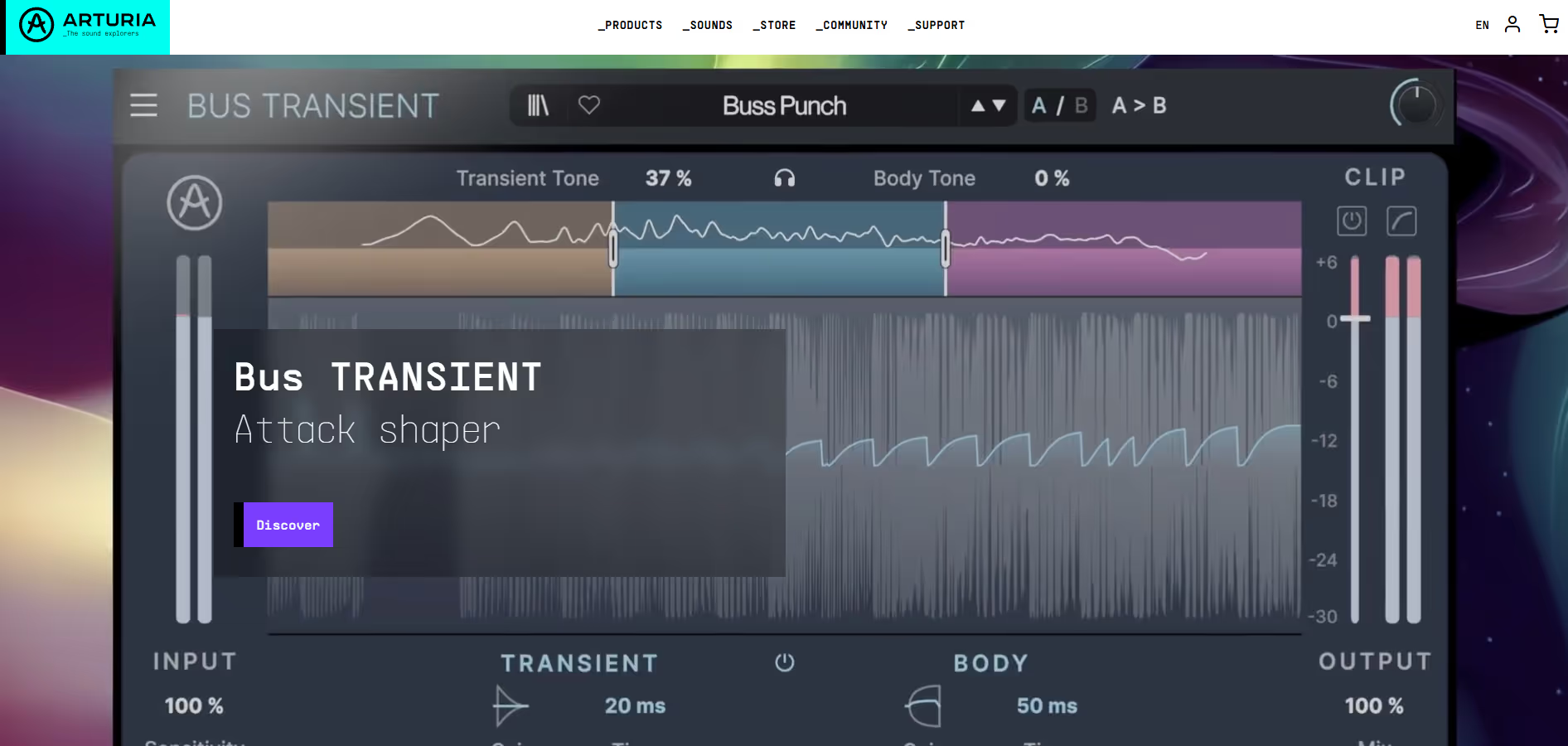
For anyone scoring to picture, EastWest Sounds is a name that comes up a lot, mostly for its deep sample libraries. Their instruments run inside the OPUS engine, which loads into Cubase as a VST3 plugin, keeping things straightforward.
EastWest Sounds Features
The OPUS engine plays nice inside Cubase, giving you detailed control over articulations and parameters. You can program keyswitches in the MIDI editor or draw automation for mic positions right on the timeline. Any tempo-synced content also locks to your project tempo without extra work.
- Use Cubase Expression Maps for organized articulation switching in complex orchestral templates.
- Load multiple instruments in a single instance of OPUS and route them to separate MIDI tracks.
- Map instrument controls like expression and dynamics to Cubase’s controller lanes for real-time performance.
EastWest Sounds Price
You can get access to everything through the ComposerCloud subscription, which starts at $19.99 a month. If subscriptions aren't your style, they also sell perpetual licenses for individual libraries so you can just buy what you need.
3) EastWest Sounds
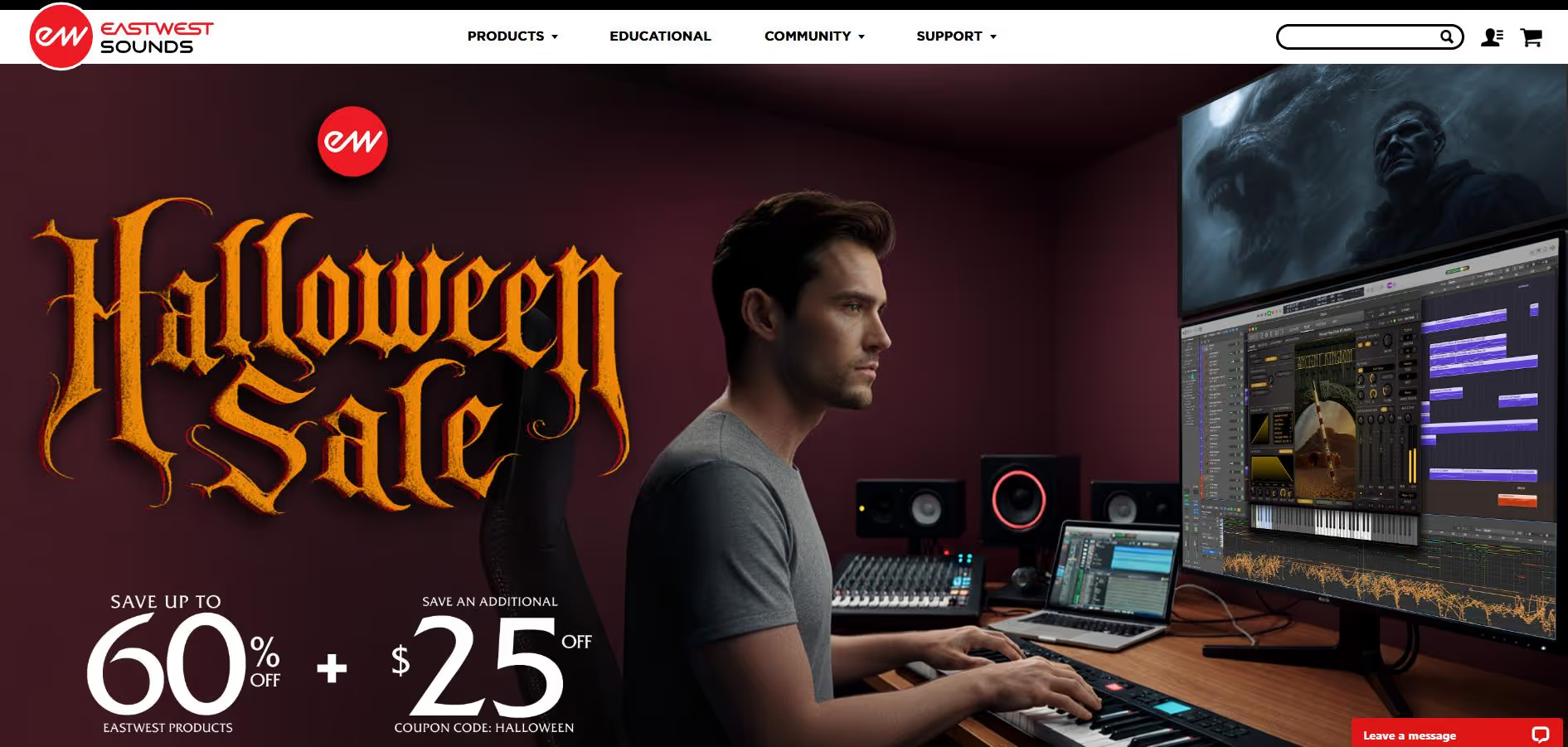
EastWest Sounds is known for its large sample libraries, particularly for orchestral and cinematic work. Its instruments are hosted in the OPUS engine, which runs as a VST plugin inside Cubase.
EastWest Sounds Features
The OPUS engine integrates with Cubase for detailed scoring tasks. You can automate instrument parameters like mic positions in Cubase’s automation lanes or use Expression Maps for handling complex articulation switching. It also supports loading multiple instruments in one instance and routing them to separate MIDI tracks.
- Program keyswitches and articulations with Cubase’s MIDI editors and Expression Maps.
- Automate instrument controls using standard Cubase automation lanes.
- Tempo-synced loops and phrases automatically lock to your project tempo.
EastWest Sounds Price
Access is available through the ComposerCloud subscription, which starts at $19.99 per month. Alternatively, you can buy perpetual licenses for individual libraries if you prefer to own them outright.
4) u-he

The synth-heads at u-he are known for Diva, a software instrument that models analog synthesizers by letting you swap out different digital oscillators, filters, and envelopes. It loads into Cubase as a standard VST plugin, so integration is straightforward.
u-he Features
Diva works with Cubase’s core functions for automation and control. You can use MIDI learn to map your hardware controller’s knobs to the synth’s parameters or draw automation directly into lanes for things like filter sweeps and modulation. While its detailed modeling can be demanding on your CPU, Cubase’s performance management helps keep sessions running smoothly.
- Automate any parameter using Cubase’s automation lanes for dynamic sound shaping.
- Map hardware controls to the interface with its MIDI learn function.
- Manage and browse its large preset library from within your DAW.
u-he Price
Diva is available for a one-time purchase of 179 €. After buying it from the u-he website, you get a serial number to unlock the full version of the plugin.
5) Native Instruments
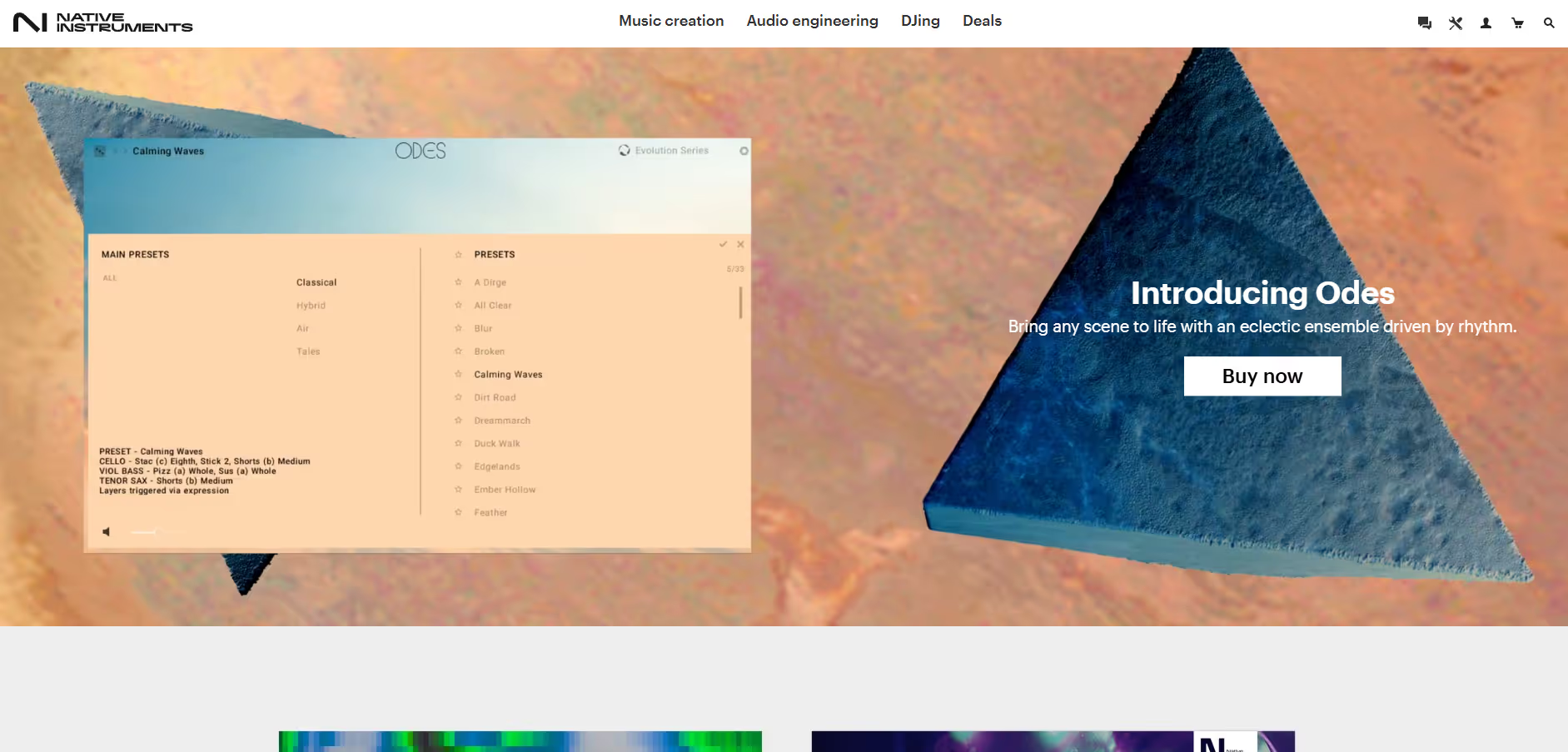
Native Instruments is a major player in music software and hardware, and their products integrate with Cubase as standard VST plugins. Their ecosystem includes everything from samplers and synths to amp simulators.
Native Instruments Features
Getting NI's tools running in Cubase is a standard affair. Instruments like Kontakt and Massive load onto instrument tracks, while effects such as Guitar Rig can be dropped into any insert slot in the MixConsole. On newer Apple Silicon machines, keep in mind that VST2 plugins require running Cubase in Rosetta mode for compatibility.
- Add instruments like Kontakt or Massive directly to Instrument Tracks.
- Use effects like Guitar Rig Pro in any track’s insert slots.
- VST3 plugins are supported natively on Apple Silicon, but VST2 requires Rosetta mode.
Native Instruments Price
Native Instruments offers its software in bundles called Komplete, with prices ranging from $199 for the "Select" version to $1,799 for the "Collector's Edition." You can also buy products individually; for example, Kontakt 7 is $399 and Guitar Rig 6 Pro is $199.
6) Slate Digitial
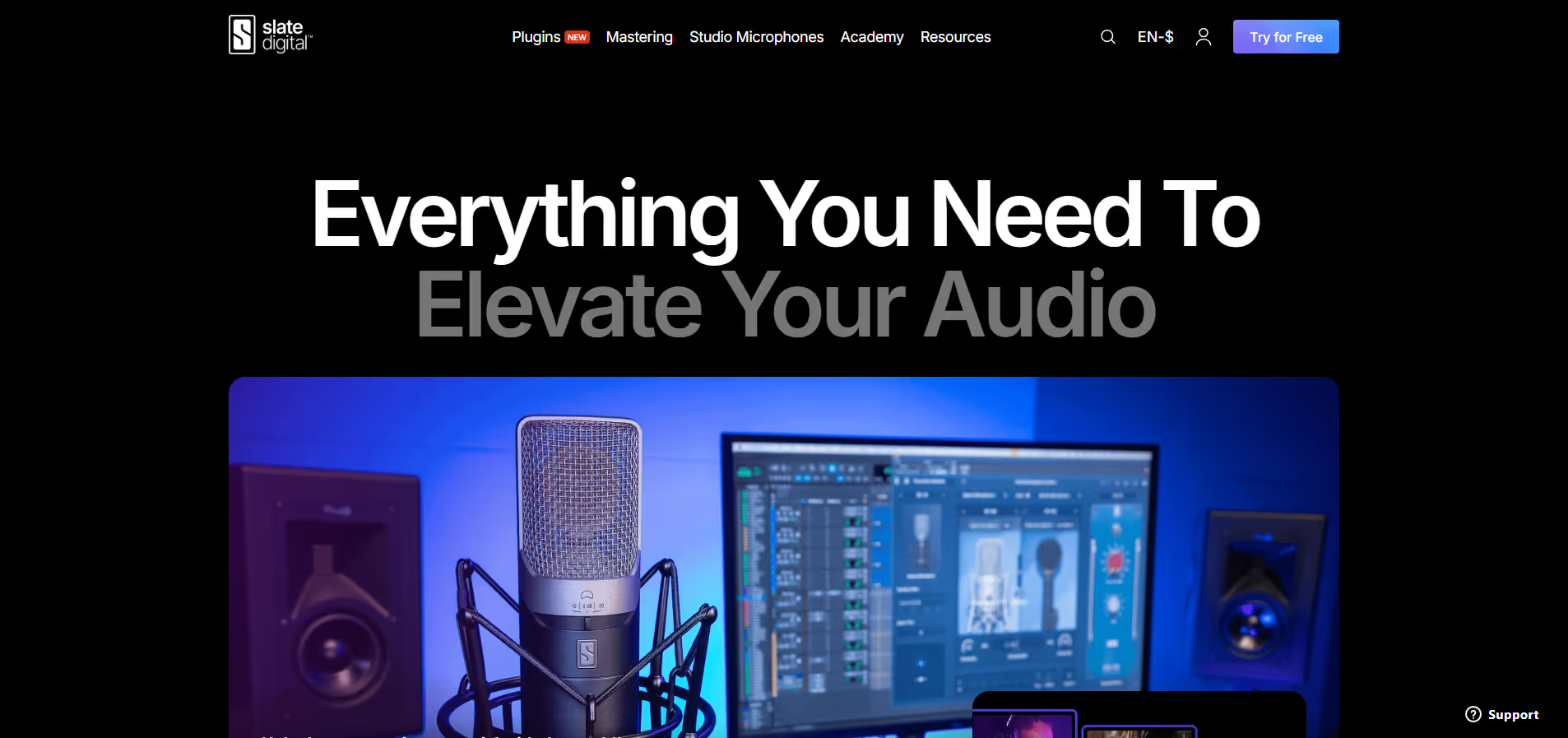
Slate Digital offers a suite of mixing and mastering plugins that run in Cubase as VST2 and VST3 effects. Their tools cover the usual suspects: EQs, compressors, reverbs, and other processing tools for mixing and mastering.
Slate Digital Features
Slate's plugins load into Cubase like any other VST, but there are a few operational quirks to be aware of. Since Cubase 12 dropped VST2 support, you may need to run it in Rosetta mode on Apple Silicon Macs to load older sessions that used the VST2 versions. Some users have also reported hiccups with Cubase's preset system, so saving directly within the plugins is a safer bet.
- If plugins don't appear, a rescan in Cubase's VST Plug-In Manager usually fixes it.
- Cubase 12's lack of VST2 support means older projects on Apple Silicon might require running in Rosetta mode.
- Save presets inside the plugin itself to sidestep potential issues with Cubase's preset manager.
Slate Digital Price
Slate Digital's tools are mostly available through a subscription. The All Access Pass gets you their plugins plus some courses and samples, while the Complete Access Bundle throws in plugins from Solid State Logic and Harrison Audio. You can also buy some of their plugins individually if you prefer.
How to Pick the Right Plugins for Cubase
Picking the right tools is less about hoarding plugins and more about building a focused setup that just works.
- Check for VST3 support. Cubase is moving away from the older VST2 format, especially on Apple Silicon, so sticking with VST3 plugins ensures your sessions won’t break with future updates.
- Prioritize deep integration. The best plugins feel like a native part of the DAW, not a clunky add-on. Tools that offer features like drag-and-drop functionality or AI-driven sound suggestions right inside your session, like our own Co-Producer, keep you in the flow state without menu diving.
- Mind your CPU. Some plugins, especially detailed analog emulations, can be resource hogs that bring your session to a crawl. Look for tools that are optimized for performance, so you can stack layers without your computer complaining.
- Solve a specific problem. Instead of grabbing another generic synth, find a tool that fills a real gap. Whether you need a granular texture machine like Portal or a workhorse orchestral library, choose plugins that have a clear job to do in your music.
How to Add Plugins to Cubase
Getting new tools into Cubase is pretty straightforward once you know the drill. Here’s how to get your plugins up and running in just a few steps.
- Install the Plugin: First, run the installer for your new software. If you're adding one of our tools, for example, you’ll use the Output Hub. This application places the VST3 file in the correct folder so Cubase can find it automatically.
- Scan in Cubase: Open your Cubase project. The DAW usually scans for new plugins on startup. If your new tool doesn’t appear, go to Studio > VST Plug-in Manager and click the rescan button. This forces Cubase to look for any new additions.
- Load It Up: Once scanned, the plugin is ready to use. For an instrument like Arcade, create an Instrument Track and select it from the instrument list. For an effect like Portal or Thermal, simply add it to an insert slot on any audio or instrument track in the MixConsole.
Test-Drive Output in Cubase and Hear the Difference
Honestly, you can't go wrong with any of these tools in your Cubase setup. That said, if you want plugins that feel less like add-ons and more like a native extension of your DAW, our instruments and effects are built for that exact purpose.
Stop scrolling through menus and start making music. Try Output today.
With Output One, you get the full suite—Arcade, engines, FX, and Co-Producer—integrated in Cubase. Spend less time searching and more time recording with key- and tempo-aware picks.
Try Output One for freeGet Output announcements, tips, inspiration, and more sent to your inbox.



